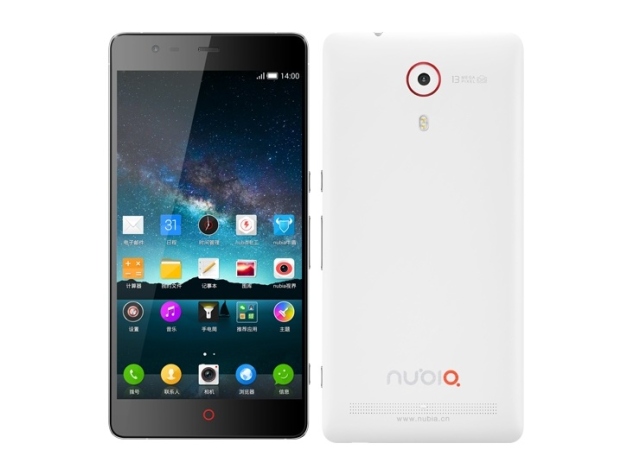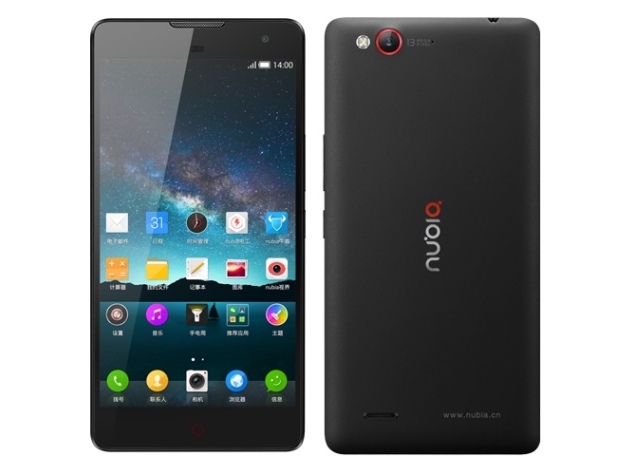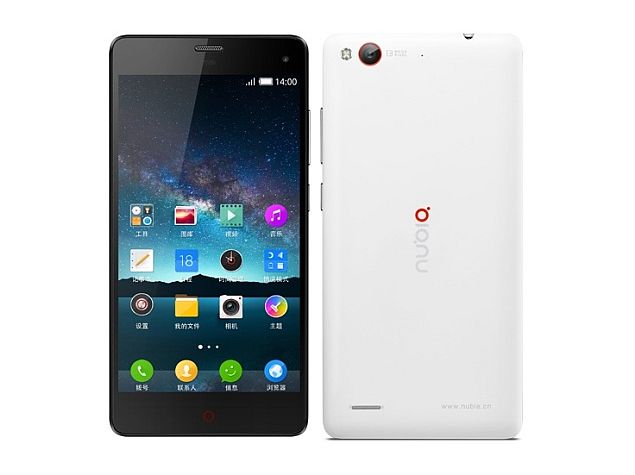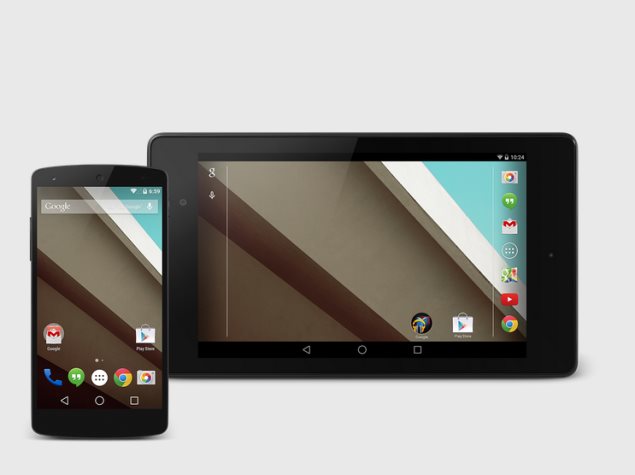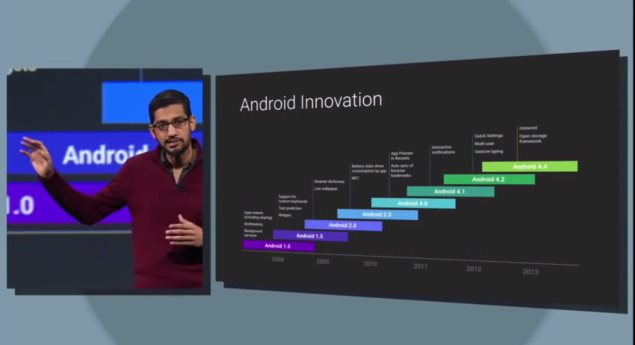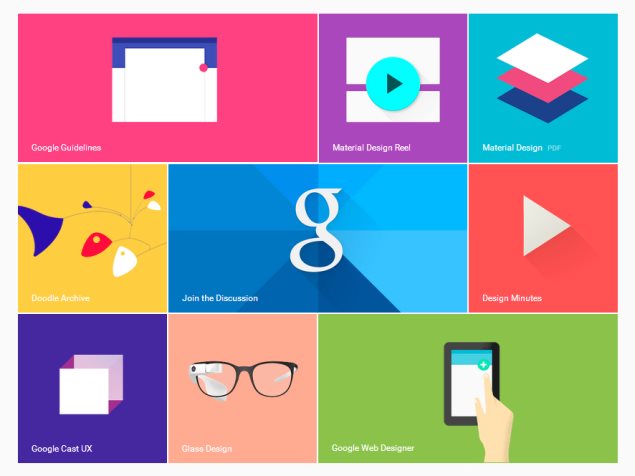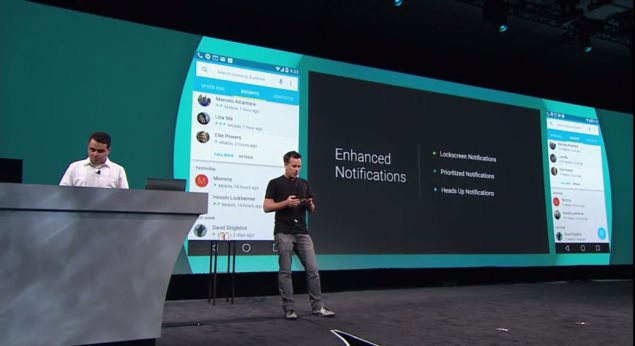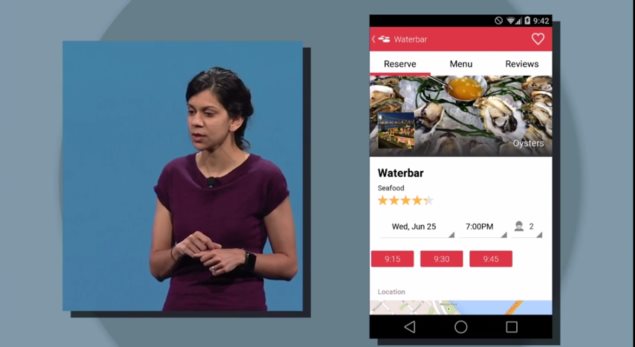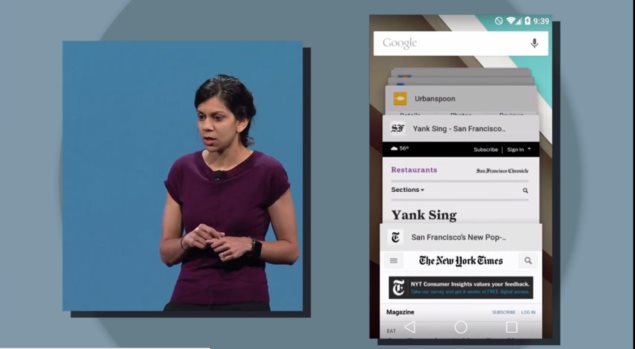Galaxy Note 4 hands-on and first impressions
We’re in Berlin for IFA 2014, and the star of the show has just been announced. The Galaxy Note 4 is Samsung’s big hope for this end of the year, after a slowdown at the high-end took its toll on the company’s recent financial results. On paper, the new Note has everything going for it, from a sleek metallic design, to a cutting-edge screen, and enhanced software features. But will the Note 4 be the smashing hit Samsung’s been looking for? We were lucky enough to have some hands-on time with the device ahead of today’s event, so we can give you our first hands-on impressions with the brand new Galaxy Note 4.

Design and build
After a love affair with plastic that has lasted for years, Samsung is finally transitioning the design of its flagship phones to include metallic elements. It started with the Galaxy Alpha, and now the Note 4 is the second device taking advantage of a metal frame to great effect. To be clear, the Note 4 is very similar in appearance to the Note 3 before it, with the same general shape, approximate dimensions, and styling. However, the thin metal band going around its edges gives the Note 4 a much better feeling in hand. It’s not that it’s much thinner than its predecessor, but the slightly tapered profile and the chamfered edges of the metal frame make it feel more compact than it really is. You get the same sculpted profile of the corners, though it seems less pronounced than on the Alpha. Another difference is the fact that the metal frame has a matte texture, which gives it a nice grip.
You get the same sculpted profile of the corners, though it seems less pronounced than on the Alpha. Another difference is the fact that the metal frame has a matte texture, which gives it a nice grip. The front and back are very similar to what we’ve known at the Note series for years – the only distinctive element on the front side is the so-called 2.5D glass profile. You’ll see what this means if you look at the edges of the glass covering the Note 4’s front, which are slightly raised above the frame and feature a subtle curvature.
The front and back are very similar to what we’ve known at the Note series for years – the only distinctive element on the front side is the so-called 2.5D glass profile. You’ll see what this means if you look at the edges of the glass covering the Note 4’s front, which are slightly raised above the frame and feature a subtle curvature. On the back, you get the same arrangement of the camera, flash, and heart rate monitor you get on the S5, with a plastic removable back cover. The texture is similar, but not identical to the Note 3’s. And yes, there’s no stitching this time around. Pop the back and you’ll see the standard removable battery, microSD card, and micro SIM slot. Unlike the Galaxy S5, the Note 4 isn’t waterproof – when we asked Samsung’s reps why, they said the Note 4 is for people interested in being productive and creative on the go, while the Galaxy S5 is a more generalist device.
On the back, you get the same arrangement of the camera, flash, and heart rate monitor you get on the S5, with a plastic removable back cover. The texture is similar, but not identical to the Note 3’s. And yes, there’s no stitching this time around. Pop the back and you’ll see the standard removable battery, microSD card, and micro SIM slot. Unlike the Galaxy S5, the Note 4 isn’t waterproof – when we asked Samsung’s reps why, they said the Note 4 is for people interested in being productive and creative on the go, while the Galaxy S5 is a more generalist device. The S Pen slot is in the precise same place, while the bottom side of the phone also houses a “regular” microUSB port, instead of the USB 3 port of the Note 3. There are also a couple of microphones on the bottom, with another one at the top.
The S Pen slot is in the precise same place, while the bottom side of the phone also houses a “regular” microUSB port, instead of the USB 3 port of the Note 3. There are also a couple of microphones on the bottom, with another one at the top. The Note 4 will be available at launch in four color options – Charcoal Black (which is actually a really dark grey), Frost White, Bronze Gold, and Blossom Pink.
The Note 4 will be available at launch in four color options – Charcoal Black (which is actually a really dark grey), Frost White, Bronze Gold, and Blossom Pink.
Display, hardware, and performance You get the same sculpted profile of the corners, though it seems less pronounced than on the Alpha. Another difference is the fact that the metal frame has a matte texture, which gives it a nice grip.
You get the same sculpted profile of the corners, though it seems less pronounced than on the Alpha. Another difference is the fact that the metal frame has a matte texture, which gives it a nice grip. The front and back are very similar to what we’ve known at the Note series for years – the only distinctive element on the front side is the so-called 2.5D glass profile. You’ll see what this means if you look at the edges of the glass covering the Note 4’s front, which are slightly raised above the frame and feature a subtle curvature.
The front and back are very similar to what we’ve known at the Note series for years – the only distinctive element on the front side is the so-called 2.5D glass profile. You’ll see what this means if you look at the edges of the glass covering the Note 4’s front, which are slightly raised above the frame and feature a subtle curvature. On the back, you get the same arrangement of the camera, flash, and heart rate monitor you get on the S5, with a plastic removable back cover. The texture is similar, but not identical to the Note 3’s. And yes, there’s no stitching this time around. Pop the back and you’ll see the standard removable battery, microSD card, and micro SIM slot. Unlike the Galaxy S5, the Note 4 isn’t waterproof – when we asked Samsung’s reps why, they said the Note 4 is for people interested in being productive and creative on the go, while the Galaxy S5 is a more generalist device.
On the back, you get the same arrangement of the camera, flash, and heart rate monitor you get on the S5, with a plastic removable back cover. The texture is similar, but not identical to the Note 3’s. And yes, there’s no stitching this time around. Pop the back and you’ll see the standard removable battery, microSD card, and micro SIM slot. Unlike the Galaxy S5, the Note 4 isn’t waterproof – when we asked Samsung’s reps why, they said the Note 4 is for people interested in being productive and creative on the go, while the Galaxy S5 is a more generalist device. The S Pen slot is in the precise same place, while the bottom side of the phone also houses a “regular” microUSB port, instead of the USB 3 port of the Note 3. There are also a couple of microphones on the bottom, with another one at the top.
The S Pen slot is in the precise same place, while the bottom side of the phone also houses a “regular” microUSB port, instead of the USB 3 port of the Note 3. There are also a couple of microphones on the bottom, with another one at the top. The Note 4 will be available at launch in four color options – Charcoal Black (which is actually a really dark grey), Frost White, Bronze Gold, and Blossom Pink.
The Note 4 will be available at launch in four color options – Charcoal Black (which is actually a really dark grey), Frost White, Bronze Gold, and Blossom Pink.
The big story about the Note 3’s display is its Quad HD resolution. At 5.7 inches and 2560 x 1440 pixels, that gives it a whopping pixel density of 515 ppi. This is the same bright and vivid AMOLED panel Samsung loves to put on its high-end offerings, and it looks just as good as you’d expect. The question is – will you notice that density boost? Personally, we can’t say we noticed a difference, at least not from the hour or so we had with the device. We both (Josh and Bogdan) agree that the display looks great… we’re just not convinced that going Quad HD is a good reason to upgrade to the Note 4.
 Performance-wise, the Qualcomm Snapdragon 805 version that we got to play with was smooth in most situations. Then again, we couldn’t really put it through its paces, so we can’t say if lag is gone for good. With a cutting edge Snapdragon 805/Exynos 5 Octa processor, the Note 4 should do excellent under intensive loads, and we look forward to seeing how it does in gaming. There’s the whole assortment of hardware features, with a couple that stand out being the noise cancelling microphone setup, the UV sensor, and the fast charging battery. The Note 4 uses three microphones to remove ambient noise when recording, as well as for some selective recording tricks like capturing only the voice of the person in front of you or selectively cancelling out the voices coming from a certain direction. In Samsung’s pre-recorded demo, the noise cancellation worked really well, but naturally, your mileage may vary.
Performance-wise, the Qualcomm Snapdragon 805 version that we got to play with was smooth in most situations. Then again, we couldn’t really put it through its paces, so we can’t say if lag is gone for good. With a cutting edge Snapdragon 805/Exynos 5 Octa processor, the Note 4 should do excellent under intensive loads, and we look forward to seeing how it does in gaming. There’s the whole assortment of hardware features, with a couple that stand out being the noise cancelling microphone setup, the UV sensor, and the fast charging battery. The Note 4 uses three microphones to remove ambient noise when recording, as well as for some selective recording tricks like capturing only the voice of the person in front of you or selectively cancelling out the voices coming from a certain direction. In Samsung’s pre-recorded demo, the noise cancellation worked really well, but naturally, your mileage may vary. As rumored, there’s a UV sensor that can be used to detect radiation levels and get advice for protection. This doesn’t happen automatically, so you can only get discrete measurements from the S Health app. The most interesting new feature is fast charging – we were told that the tech lets you fill up half the capacity of the Note 4 in just 30 minutes, and that charging it completely takes 30 percent less time than with conventional technology. From what we understand, you need a special charger for this to work, so you won’t be able to use the old charger you had laying around in a drawer. This looks like a very exciting feature, coming to a device that has long been known for its battery life. But it remains to be seen what impact that Quad HD screen has on the Note 4’s longevity.
As rumored, there’s a UV sensor that can be used to detect radiation levels and get advice for protection. This doesn’t happen automatically, so you can only get discrete measurements from the S Health app. The most interesting new feature is fast charging – we were told that the tech lets you fill up half the capacity of the Note 4 in just 30 minutes, and that charging it completely takes 30 percent less time than with conventional technology. From what we understand, you need a special charger for this to work, so you won’t be able to use the old charger you had laying around in a drawer. This looks like a very exciting feature, coming to a device that has long been known for its battery life. But it remains to be seen what impact that Quad HD screen has on the Note 4’s longevity.
Camera
Another first coming to the Note 4 (for Samsung devices that is) is optical image stabilization. As expected, we’ve got a 16MP sensor with OIS, that should take sharper pics, less noise, and smoother videos. We haven’t really got to test the camera in our time with the Note 4, but signs are looking positive. The app itself hasn’t changed too much, except on the UI front.
 The front facing camera also received a nice upgrade – there’s a 3.7MP sensor (up from 2.1MP on the Note 3) with a wide angle of 90 degrees (up to 77 degrees on the Note 3) and f 1.9 aperture. If 90 degrees isn’t enough for you and your friends, the Wide Selfie feature lets you do a sort of mini panorama and compose a selfie that is 120 degrees wide. You can simply tap on the heart rate monitor on the back to take a selfie, a welcome addition given the relatively large size of the Note 4.
The front facing camera also received a nice upgrade – there’s a 3.7MP sensor (up from 2.1MP on the Note 3) with a wide angle of 90 degrees (up to 77 degrees on the Note 3) and f 1.9 aperture. If 90 degrees isn’t enough for you and your friends, the Wide Selfie feature lets you do a sort of mini panorama and compose a selfie that is 120 degrees wide. You can simply tap on the heart rate monitor on the back to take a selfie, a welcome addition given the relatively large size of the Note 4.Software
As usual, Samsung focused on the productivity and multitasking features for this Note iteration. Starting with the S Pen, one of the biggest new features is Smart Select, which is basically another way to “scrapbook” stuff you find online and keep it for later usage. The twist is that you can use it on any site, so you can cut out a hotel description from Yelp and then move to Google Maps for directions, and so on. Smart Select is one of the features you can select from the new Air Command menu.
 A nice new feature is the ability to select text or images in a gallery by drawing a square around it, like you would with the mouse on your PC. Especially with text, this feature makes selection much easier.
A nice new feature is the ability to select text or images in a gallery by drawing a square around it, like you would with the mouse on your PC. Especially with text, this feature makes selection much easier. Further helping with productivity, Snap Mode lets you photograph some written text or a writing board and have the text converted into a S Note that you can edit to an extent. This works with equations too, but don’t expect to be able to make the actual text editable. There are also improvements to the multi-window feature, which now lets you easily open an app in a floating window.
Further helping with productivity, Snap Mode lets you photograph some written text or a writing board and have the text converted into a S Note that you can edit to an extent. This works with equations too, but don’t expect to be able to make the actual text editable. There are also improvements to the multi-window feature, which now lets you easily open an app in a floating window.
Wrap up
The Note 4 looks like a solid upgrade over its predecessor, even if there are no new huge features standing out. Overall, the Note 4 is just a very nice refinement of the Note concept, and the touch of metal really gives it the class such a device deserves.
 Stay tuned to Android Authority for more coverage of the Galaxy Note 4, as well as the new Note Edge, Gear S, and Gear VR. For round the clock IFA action, follow our event page. Impressed with the Galaxy Note 4 so far?
Stay tuned to Android Authority for more coverage of the Galaxy Note 4, as well as the new Note Edge, Gear S, and Gear VR. For round the clock IFA action, follow our event page. Impressed with the Galaxy Note 4 so far? 04:31
04:31
 Unknown
Unknown

























.jpg)





